Explore the Colorful World of Dahlias
Dahlias are available in more than a dozen different flower forms and sizes. Some dahlias are reminiscent of delicate waterlilies while others are perfect spherical blooms. Some are as big as a dinnerplate and others are no bigger than a golf ball. Whether you’re looking for a weather-resistant dahlia, a long-lasting cut dahlia, or a dahlia that's a pollinator magnet, there’s a form that’s right for you.
Dahlias are in the Asteraceae family which is one of the largest plant families on earth. All members of this family are called composites because their blossoms are a composite of individual flowers called florets. Dahlias have both disc florets (individual parts that make up the yellow disc center in the middle of the bloom), and ray florets (commonly called petals).
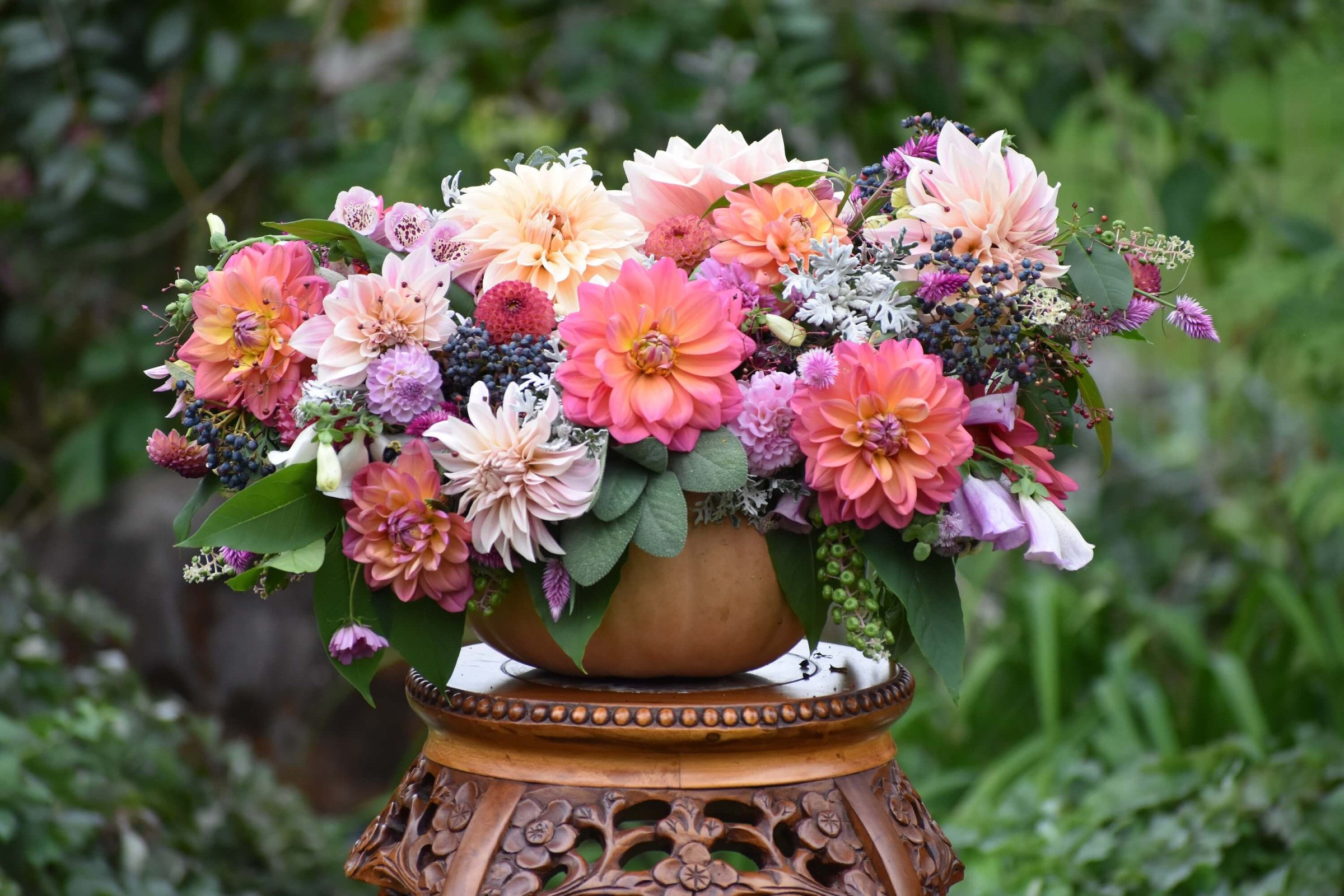
Petal presentation varies from one type of dahlia to another. Some petals are revolute meaning the margins of the ray florets roll backward along their length. Other petals are involute where the margins of the ray florets curve upward toward the bloom face. The number of petals is also variable. Single dahlias have a single row of petals surrounding an open disc center, and double dahlias (sometimes called fully double) have two or more rows of stacked petals.
The precise terminology used by the American Dahlia Society to classify dahlia forms can be found HERE. To keep it simple, this article will focus on what makes each class unique.
Dahlia Forms to Know and Love
Formal Decorative: Formal decorative dahlias have dense, double blooms. The petals are broad, flat, and evenly spaced with rounded or slightly pointed tips that gradually recurve toward the stem. These refined and classic beauties add elegance to the garden and sophistication to arrangements. Formal decorative dahlias are ideal focal flowers for compote designs.
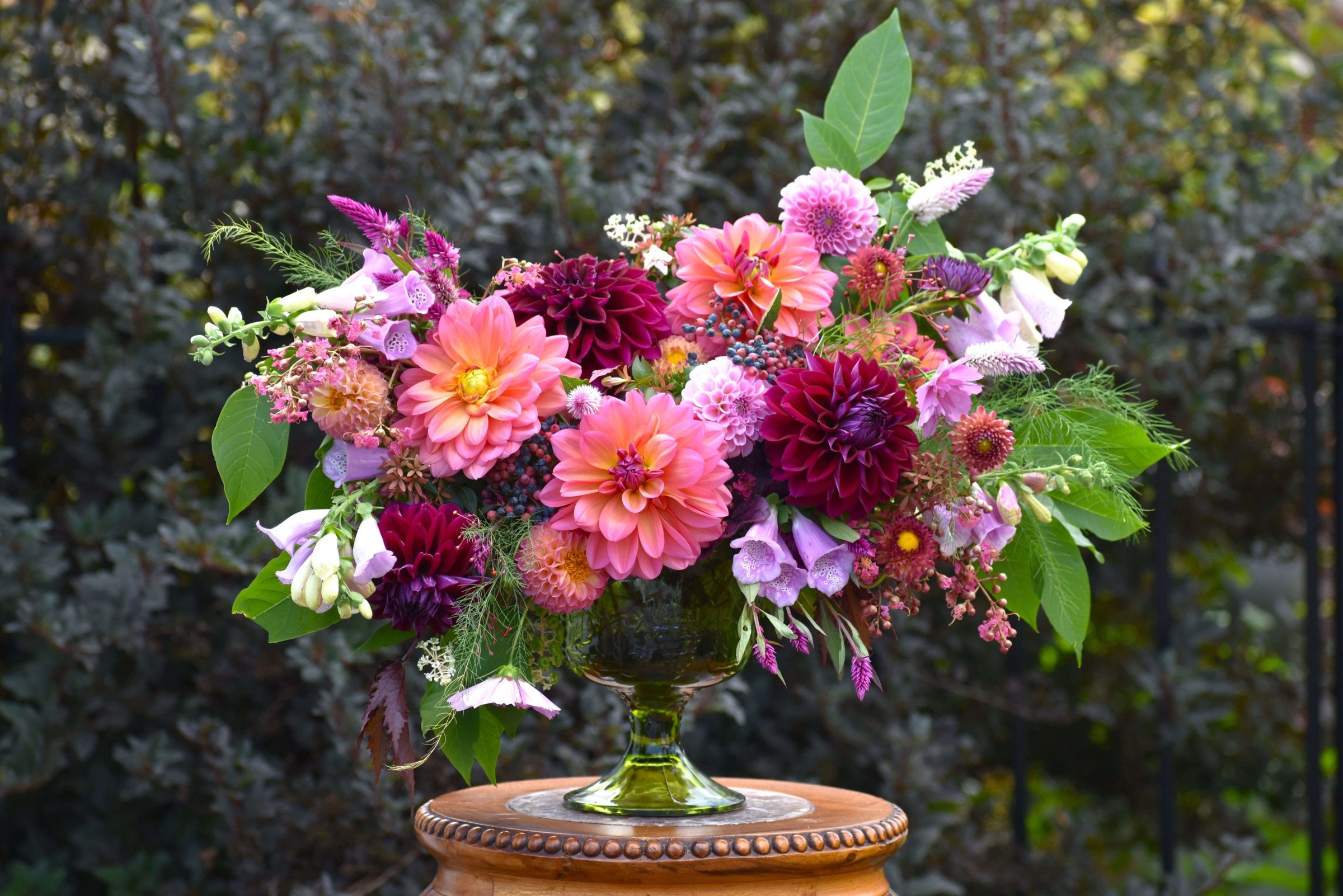 'Diva' (the deep burgundy flower shown above) is a formal decorative dahlia
'Diva' (the deep burgundy flower shown above) is a formal decorative dahlia
Informal Decorative: Informal decorative dahlias have double blooms with wavy, twisted, or curled petals. They have a softer, more relaxed appearance than their formal counterparts and bring lots of personality and pizzaz to flower arrangements. This romantic class houses many popular cultivars such as 'Café' Au Lait,' 'Breakout,' and 'Labyrinth.'
 'Cafe Au Lait' is an informal decorative dahlia
'Cafe Au Lait' is an informal decorative dahlia
Semi-Cactus: Semi-cactus dahlias have double flower heads. Their pointy petals are broad at the base, straight or incurved, and reflex toward the stem in a regular and uniform arrangement. Dahlias in the semi-cactus class are reminiscent of sea urchins or sea anemones. These dahlias are versatile garden plants, and their tight petals are less prone to rain and wind damage when compared to some of the plusher classes.
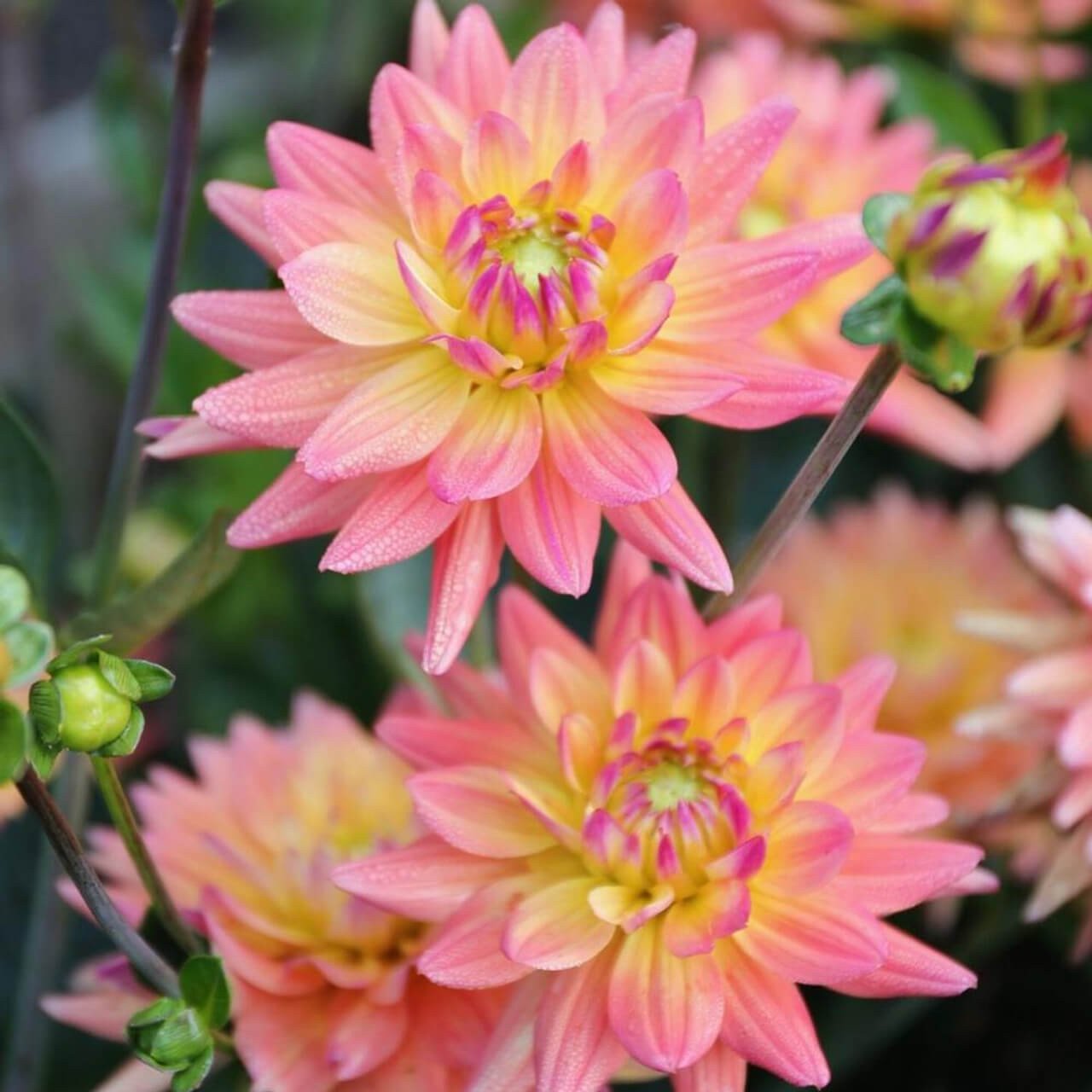 'Karma Corona' is a semi-cactus dahlia
'Karma Corona' is a semi-cactus dahlia
Straight Cactus: Straight cactus dahlias have fully double blooms. Their narrow, tubular petals are uniform in length and reflex toward the stem radiating uniformly in all directions from the center.
 'Nuit d'Ete' is a straight cactus dahlia
'Nuit d'Ete' is a straight cactus dahlia
Incurved Cactus: Incurved cactus dahlias have double blooms and look like they have a bad case of bed head. The narrow, pointed petals are curled and then twisted to swirl around the bloom. These dahlias have a zany appearance and are perfect for bringing whimsy into the garden. A solitary incurved cactus dahlia in a flower arrangement will take it from classy to sassy.
 'Star's Favorite' is an incurved cactus dahlia
'Star's Favorite' is an incurved cactus dahlia
Laciniated: Laciniated dahlias have dramatic double blooms. Their petals split and twist at the tip giving them a frilly, fringed appearance. These exciting dahlias are perfect for artistic floral designs.
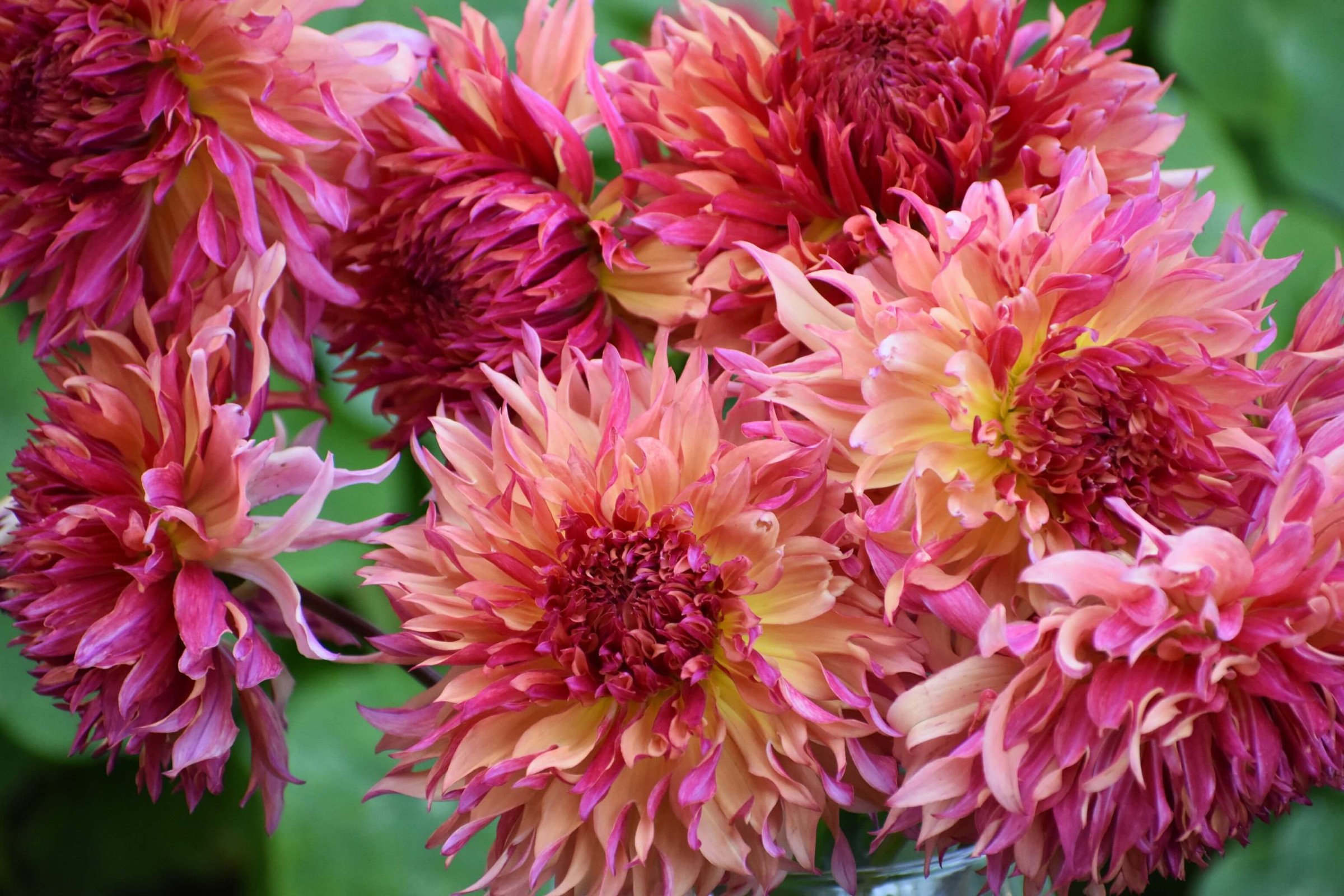 'Myrtles Folly' is a laciniated dahlia
'Myrtles Folly' is a laciniated dahlia
Ball: The ball dahlia's fully double flowers are sphere-shaped or slightly flattened at the face. Generally, the petals have blunted or rounded tips that form a spiral pattern. Additionally, the blooms must be 3.5 inches or greater to be in this class. Ball dahlias are tough, long lasting cut flowers. They are the ideal dahlia for market bouquets and when conditioned properly can have a vase life of 7-10 days.
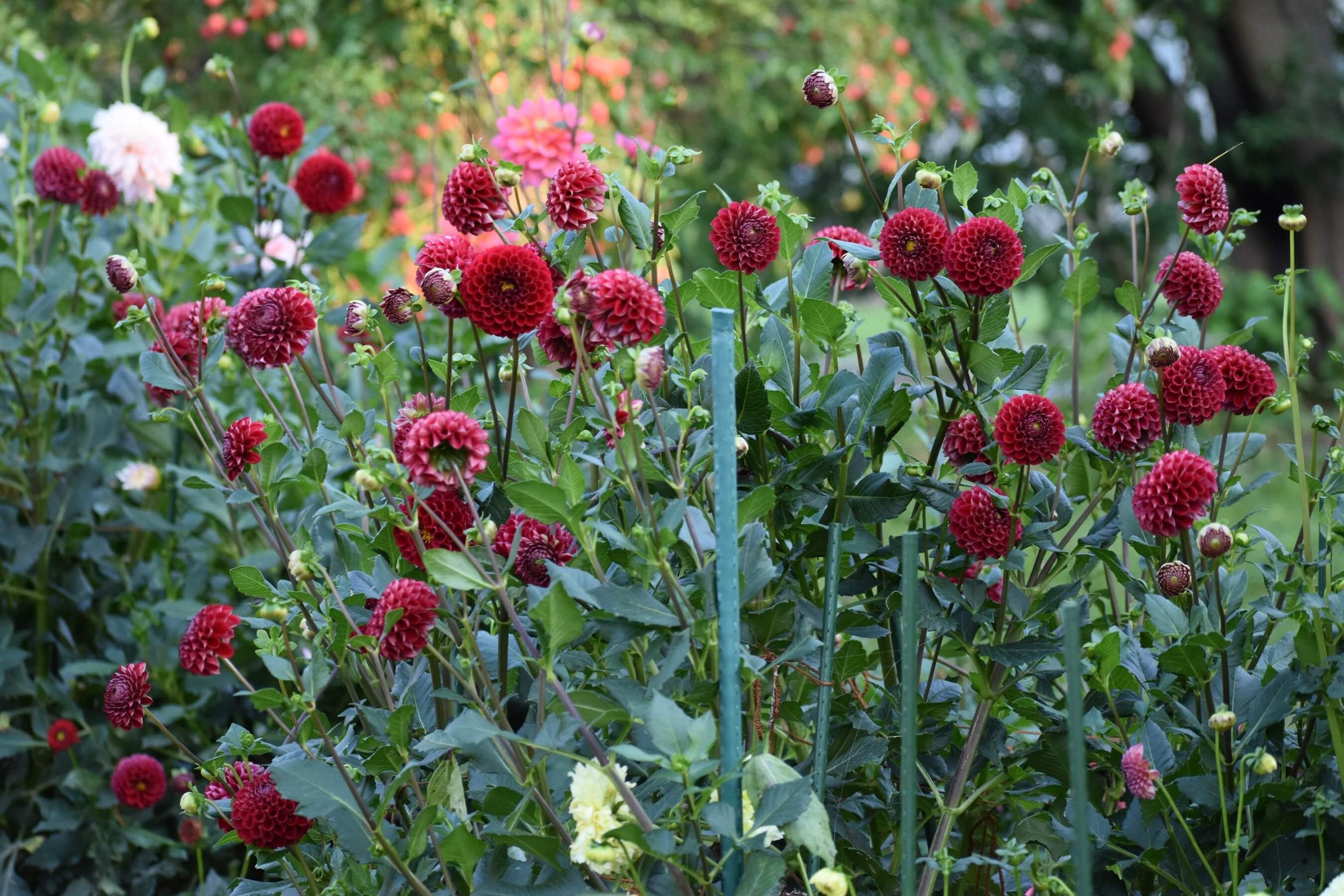 'Cornel' is a ball dahlia
'Cornel' is a ball dahlia
Miniature Ball: Miniature ball dahlias have the same form as ball dahlias, but are smaller in size at 2-3.5 inches in diameter.
Pompon: Pompon dahlias are similar to ball and miniature dahlias but are even more globelike and even smaller in size at about 2 inches in diameter. These dainty darlings add texture to floral arrangements and can be used out of water in flower crowns, boutonnieres, and other wearable floral accessories.
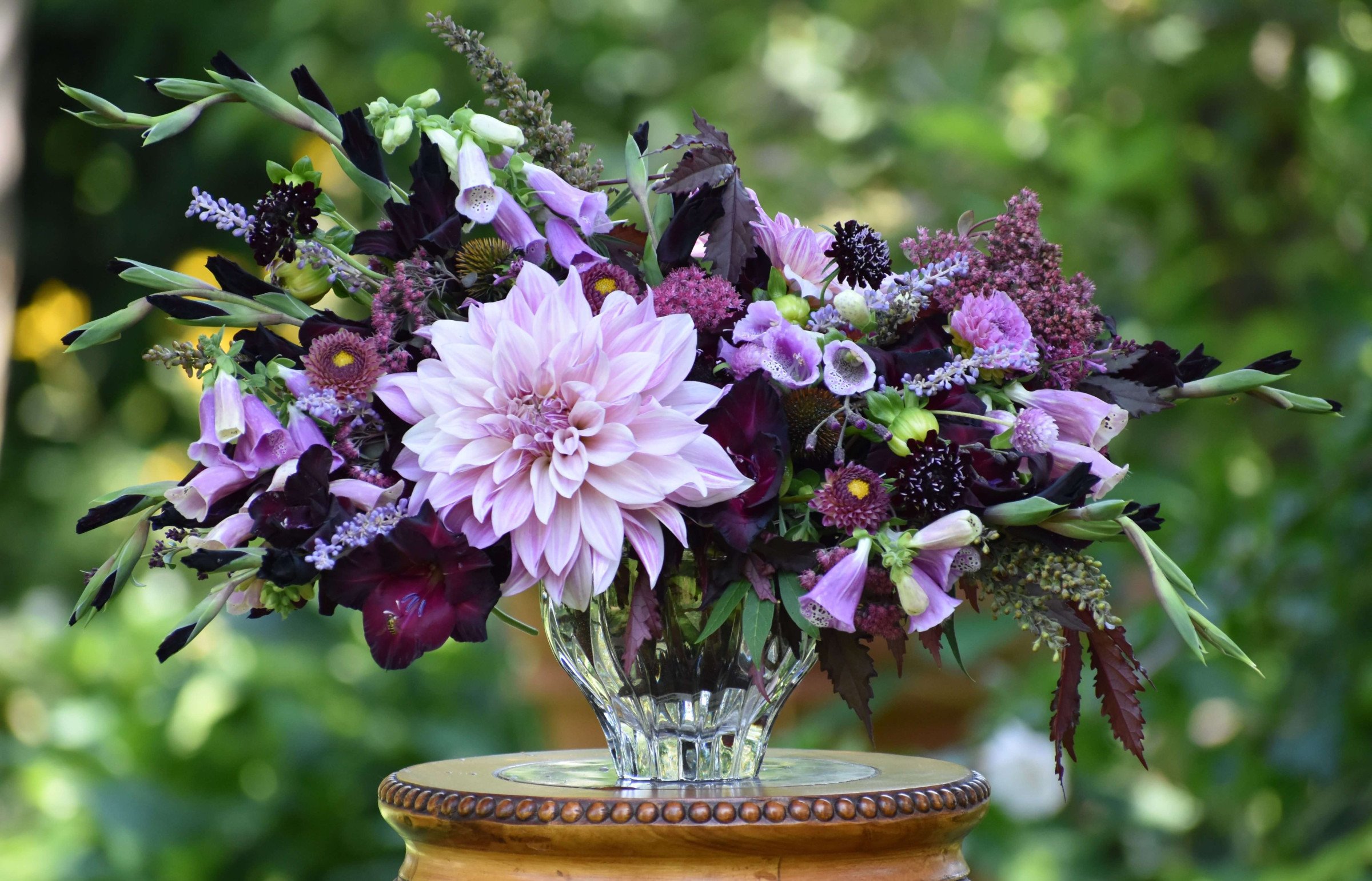 'Burlesca' is pompon dahlia
'Burlesca' is pompon dahlia
Stellar: Stellar dahlias have double blooms and a starlike appearance. Their sharply edged petals are smaller towards the center and longer towards the outside, and are often spaced farther apart than formal decorative dahlias. Stellar dahlias are eye-catching in the garden and add a bold, dramatic look to flower arrangements.
 'Gitts Crazy' is a stellar dahlia
'Gitts Crazy' is a stellar dahlia
Waterlily: Aptly named, these double dahlias look like delicate floating waterlilies. Their symmetrical flower heads appear to be flat saucers when viewed from the side. They have four to seven rows of petals with a closed, domed center. Waterlily dahlias add a sophisticated touch to arrangements and look right at home floating in a bowl of water.
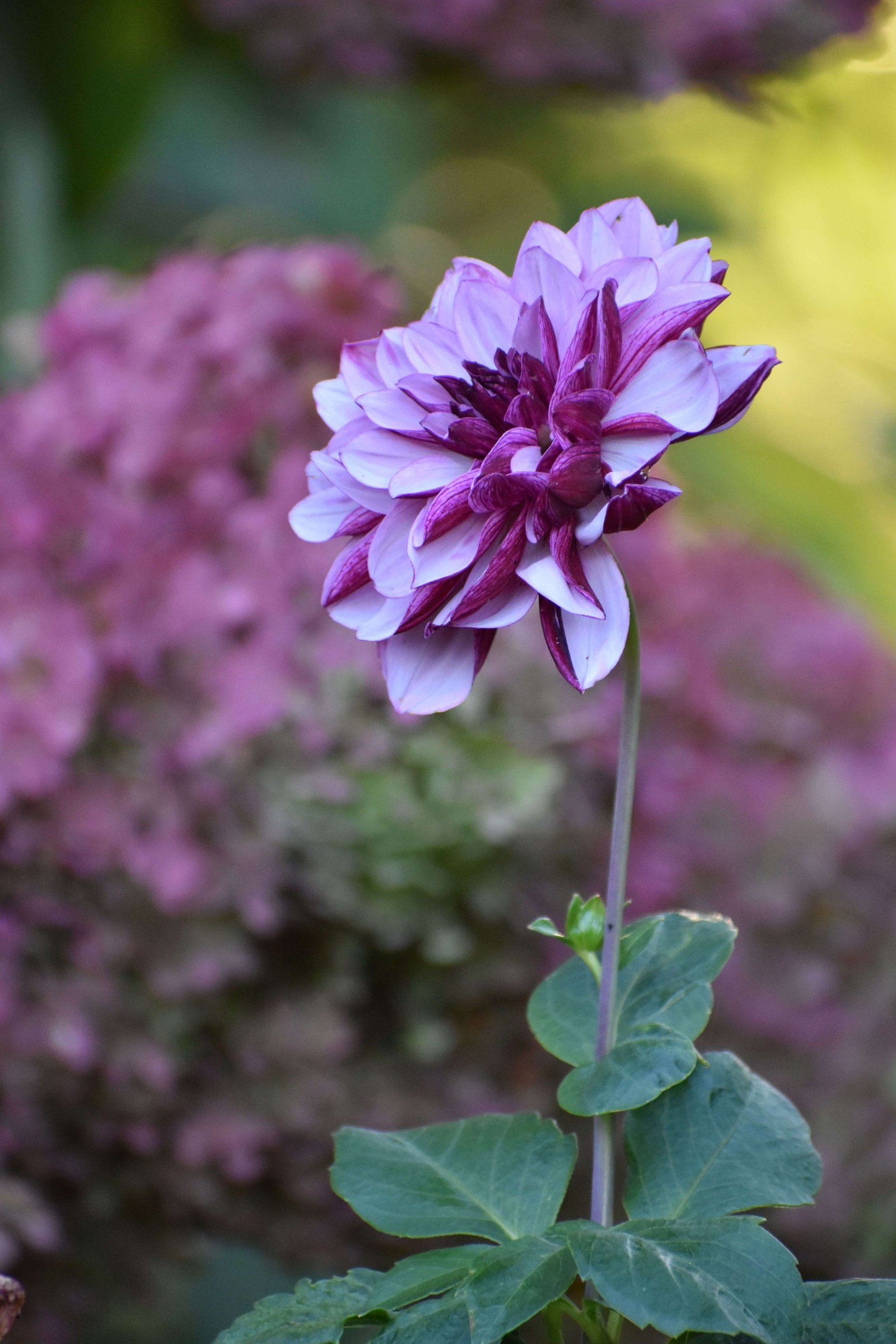 'Crème de Cassis' is a waterlily dahlia
'Crème de Cassis' is a waterlily dahlia
Peony: Peony dahlias have two, but no more than five, rows of petals surrounding an open disc center. The petals closest to the disc may be twisted or curled. Bees and butterflies are attracted to the pollen at the center of these dahlias. Some varieties have dark stems and foliage that add to the plant's appeal.
 'Fascination' is a peony dahlia
'Fascination' is a peony dahlia
Anemone-flowering: Anemone-flowering dahlias have one or more rows of petals surrounding a center of elongated tubular disc florets reminiscent of scabiosa. Their unique domed centers bring diversity to casual arrangements as well as event florals. As with single and peony-flowered dahlias, the flowers are wonderful in the garden but relatively short-lived in a vase.
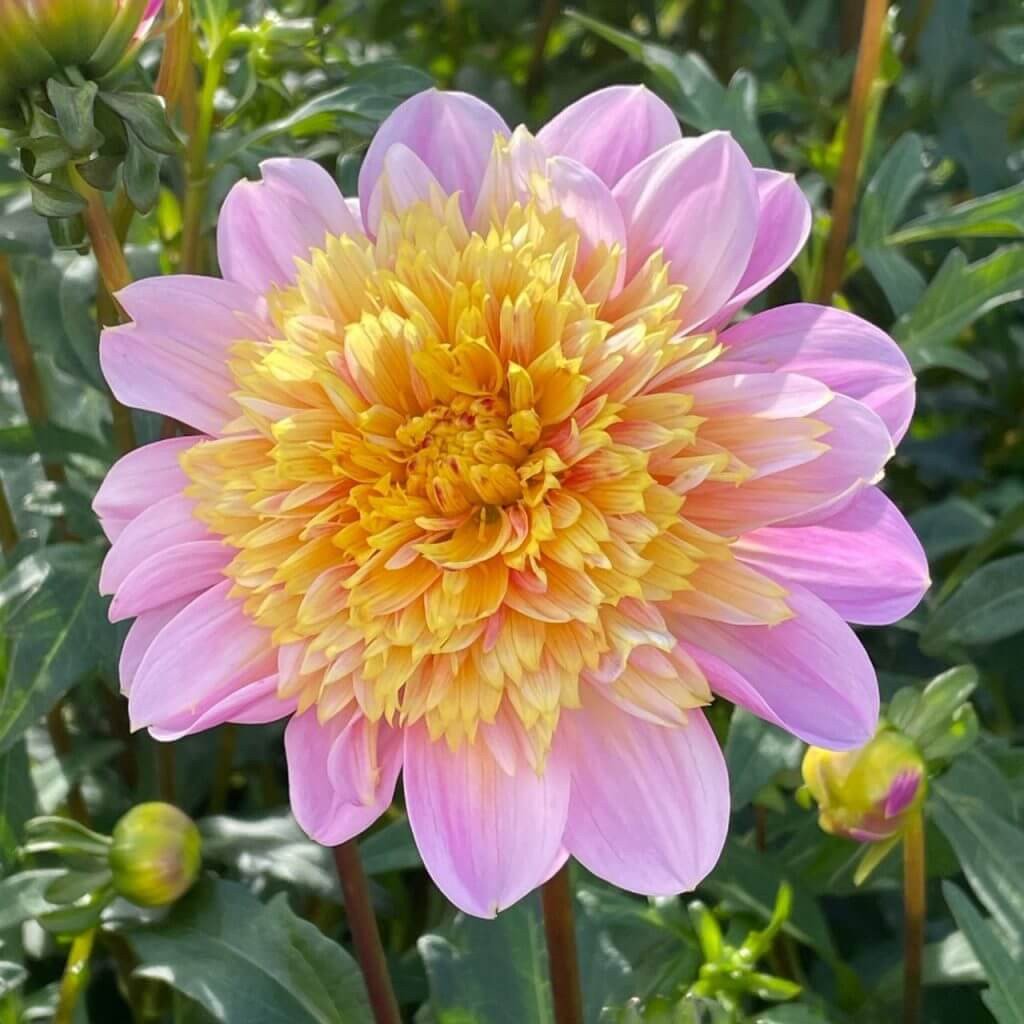 'Lifestyle' is an anemone dahlia
'Lifestyle' is an anemone dahlia
Collarette: The collarette dahlia's single blooms have a row of tiny petaloids surrounding an open, pollen-rich center. They are loved by bees and butterflies and pump out the blooms all growing season. When cut, the flowers last for only a few days in the vase, so it’s best to enjoy their alluring beauty in the garden.
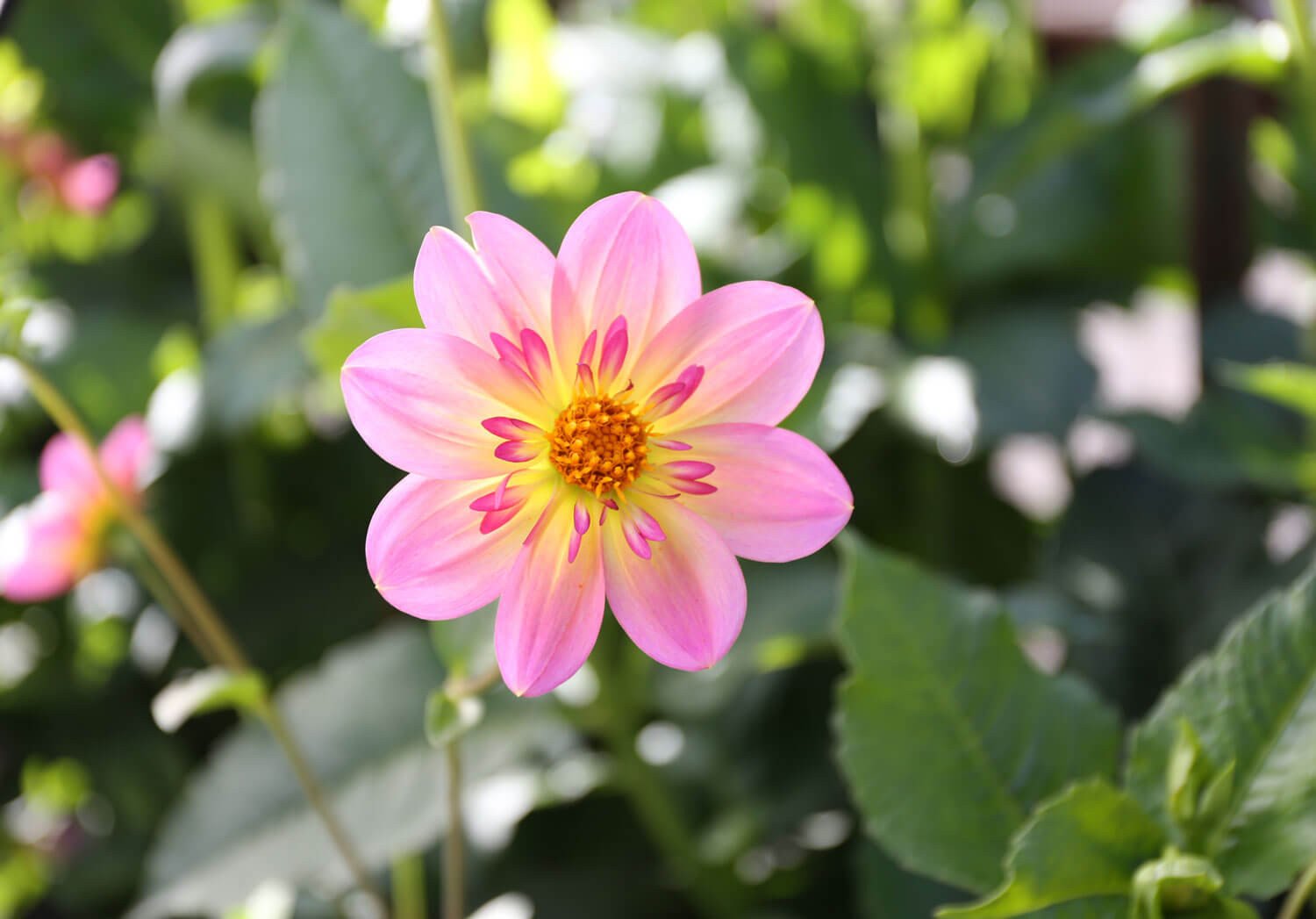 A collarette dahlia
A collarette dahlia
Single: Single dahlias have a single row of uniform, evenly spaced petals in a flat plane surrounding an open center. Some single dahlias have dark-colored foliage that adds contrast and dimension to flower beds. Most single dahlias are short-lived cut flowers. Naturally, there are always exceptions to the rule, so cut a few and test each cultivar individually.
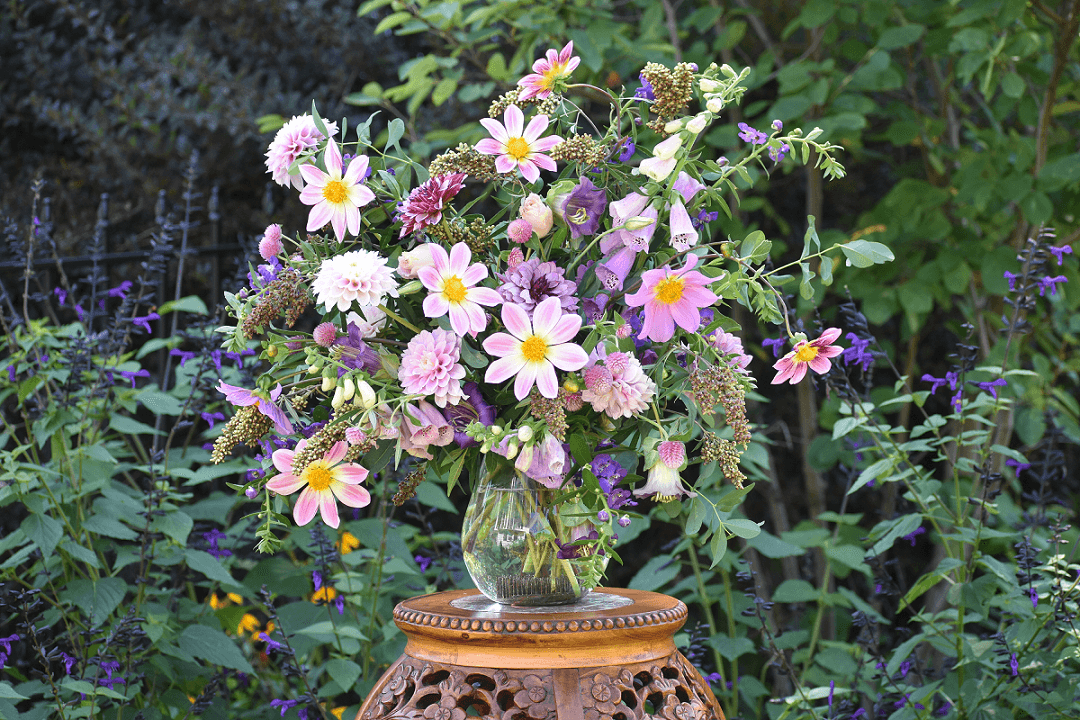 Single dahlias have a daisy-like form.
Single dahlias have a daisy-like form.
Mignon Single: These have the same flower form as a single dahlia, but are under 2 inches in diameter.
Orchid: Orchid dahlias have a single row of evenly spaced petals in a flat plane surrounding an open center. With their involute petals, these flowers resemble a pinwheel or spokes on a bicycle.
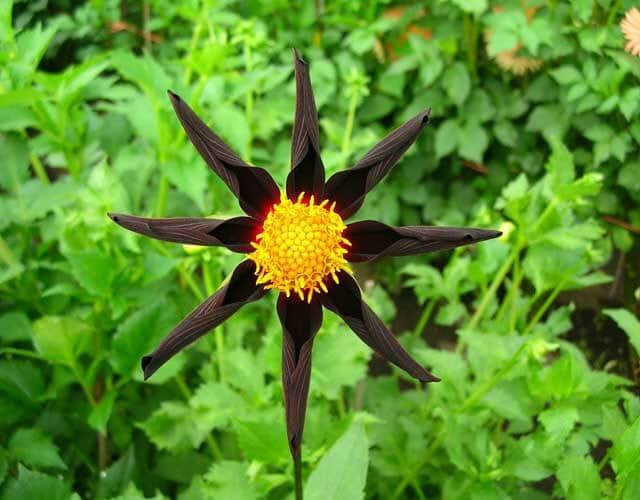
'Verrone's Obsidian' is an orchid dahlia
Orchette: Orchette dahlias combine the involute characteristics of the orchid dahlia form, with the added attraction of petaloids as in the collarette form.
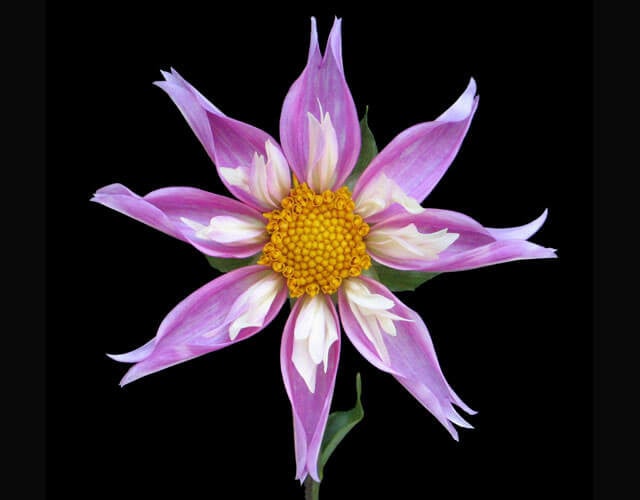 'Lorona Dawn' is an An orchette dahlia
'Lorona Dawn' is an An orchette dahlia
Novelty Open: Novelty open dahlias have open centers, and the arrangement of their petals is distinctly different from other forms.
Novelty Fully Double: Novelty fully double dahlias have good symmetry, a closed center, and layers of petals that are arranged differently from other forms.
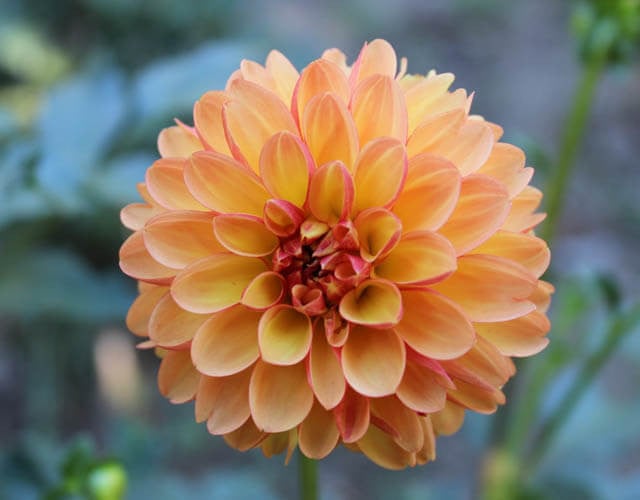
'Mingus Erica' is a novelty fully double dahlia
Micro Stellar, Micro Waterlily, Micro Novelty Fully Double, Micro Peony, Micro Anemone, Micro Novelty Open, Micro Collarette, Micro Orchid, Micro Orchette: All of these are smaller versions of the full size classifications with blooms that are no more than 2 inches in diameter.
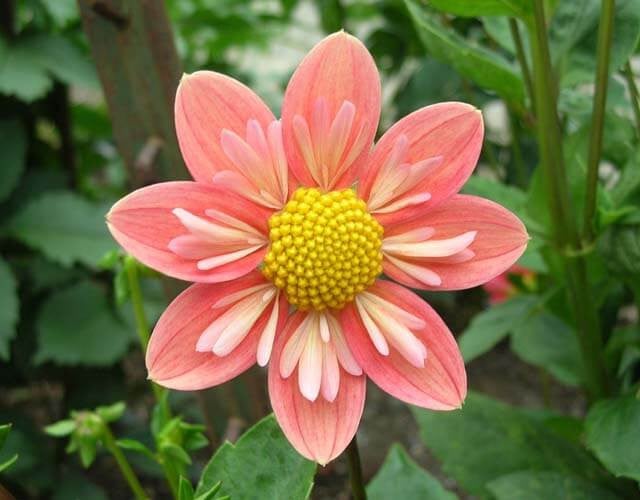
'Lake Hills Phred' is a micro collarette dahlia
